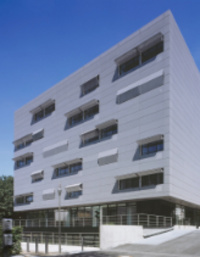Recent fundamental studies highlighted the pivotal role of insulin signaling in podocytes beyond mere glucose uptake comprising activation of AKT and mTOR. We have shown that insulin signaling in podocytes is tightly controlled by mitochondrial function. An impairment of the mitochondrial fusion and fission machinery is associated with an increased activation of the insulin signal cascade. Yet, it remains elusive whether the activation of the insulin cascade in podocytes is the result of canonical insulin receptor and IGF-1 signaling, or whether it follows insulin-independent intrinsic pathways. Here, our overarching goal is to gain mechanistic insights into the role of deregulated insulin signaling in the pathogenesis of FSGS and to understand the specific contributions of nutrient sensing mTOR signaling and FoxO transcriptions factor activity. For this purpose, we will delineate the contribution of mitochondria to these signaling networks in FSGS and perform extensive proteomic and phospho-proteomic analyses using primary podocytes as well as cell lines. In an independent approach, we will systematically characterize the activities of insulin signaling networks during the development of focal and segmental glomerulosclerosis (FSGS) using several independent models of podocyte injury in a very high temporal resolution.
PROJECT RELATED PUBLICATIONS
Koehler S, Brähler S, Braun F, Hagmann H, Rinschen MM, Höhne M, Späth MR, Wunderlich FT, Schermer B, Benzing T, Brinkkoetter PT. A T2A-peptide based knock-in mouse model for enhanced Cre recombinase activity and fluorescent labeling of podocytes. Kidney Int 2017, 91:1510-1517.
Ising C, Brinkkoetter PT. Prohibitin Signaling at the Kidney Filtration Barrier. Adv Exp Med Biol. 2017, 982:563-575.
Kuczkowski A, Brinkkoetter PT. Metabolism and homeostasis in the kidney: metabolic regulation through insulin signaling in the kidney. Cell Tissue Res. 2017, 369:199-210.
Koehler S, Braehler S, Kuczkowski A, Binz J, Hackl MJ, Hagmann H, Hoehne M, Vogt MC, Wunderlich CM, Wunderlich FT, Schweda F, Schermer B, Benzing T, Brinkkoetter PT. Single and Transient Ca2+ Peaks in Podocytes do not induce Changes in Glomerular Filtration and Perfusion. Sci Rep 2016, 6:35400.
Rinschen MM, Schroeter CB, Koehler S, Ising C, Schermer B, Kann M, Benzing T, Brinkkoetter PT. Quantitative deep mapping of the cultured podocyte proteome uncovers shifts in proteostatic mechanisms during differentiation. Am J Physiol Cell Physiol. 2016, 311:C404-17.
Braun F, Becker JU, Brinkkoetter PT. Live or Let Die: Is There any Cell Death in Podocytes? Semin Nephrol. 2016, 36:208-219
Ising, C., Koehler, S., Braehler, S., Merkwirth, C., Höhne, M., Baris, O.R., Hagmann, H., Kann, M., Fabretti, F., Dafinger, C., Bloch, W., Schermer, B., Linkermann, A., Brüning, J.C., Kurschat, C., Müller, R.U., Wiesner, R., Langer, T., Benzing, T., Brinkkoetter, PT. Inhibition of insulin/IGF-1 receptor signalling protects from mitochondria-mediated kidney failure. Embo Mol Med 2015, 7, 275-287.
Rinschen MM, Wu X, König T, Pisitkun T, Hagmann H, Pahmeyer C, Lamkemeyer T, Kohli P, Schnell N, Schermer B, Dryer S, Brooks BR, Beltrao P, Krueger M, Brinkkoetter PT*, Benzing T*. Phospho-proteomic analysis reveals regulatory mechanisms at the kidney filtration barrier. J Am Soc Nephrol. 2014, 25:1509-22. *equal contribution
Brinkkoetter PT, Ising C, Benzing T. The role of the podocyte in albumin filtration. Nat Rev Nephrol. 2013, 9:328-336



